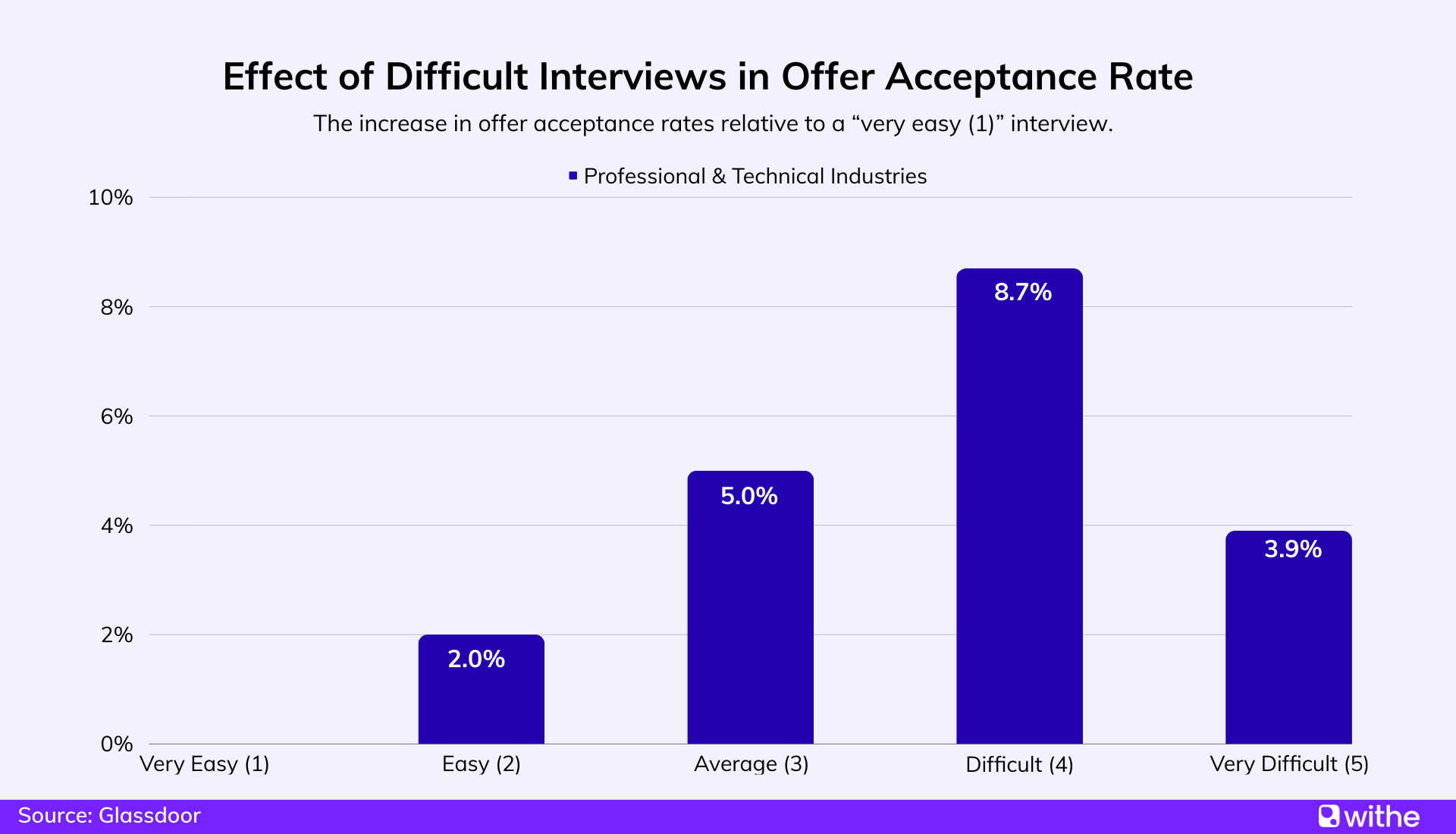Leverage Withe's hiring event platform
Streamline your seasonal and high-volume hiring process and hit your hiring targets.
This is the final chapter of our 3-part series on the most important statistics related to talent acquisition.
Starting at the top of the recruitment funnel, our first article on 30+ Job Application Statistics uncovered insights on application drop-off rates, the number of questions in a qualification form, job description length, and the trend towards mobile applications.
Moving to the middle of the recruitment funnel, our second article: 50+ Job Interview Statistics, sheds light on data about applicant-to-interview rate, interview scheduling, candidate experience, and the effect of video and virtual interviews in the hiring process.
Today, we’ll focus on the bottom of the talent acquisition funnel: Job Offer
In this article, we are going to explore how candidate experience plays an important role in the job offer stage and key recruiting funnel metrics such as interview-to-offer rate and offer acceptance rates.
Leverage Withe's hiring event platform
Streamline your seasonal and high-volume hiring process and hit your hiring targets.
Key Job Offer Statistics to Know
- 49% of candidates declined a job offer due to poor experience in 2022
- 36.2% is the average interview-to-offer conversion rate in 2023
- 10 days—that’s how quick the best candidates are off the job market
- 73% is the average offer acceptance rate in 2023
- 93% of job seekers say it is important to be thoughtful and informed about all aspects of a company prior to accepting a job offer.
In our previous articles, we explored candidate experience during the job application and job interview stages. Looking at the final stage of the talent acquisition funnel, we see how important candidate experience is for securing qualified candidates.
According to the latest Candidate Experience survey conducted by CareerPlug,
- 49% of candidates have declined a job offer due to poor experience.
- 81% of candidates surveyed said a positive experience influenced their decision to accept an offer.

Interview to Offer Rate
According to Jobvite, the average interview-to-offer conversion rate in 2023 is 36.2% - this has more than doubled since 2015. In 2015, only 17 of every 100 interviews would have led to an offer, today that number is up to 36. (Recruitment Benchmark Report)
| Year | Average Interview-to-offer Rate |
|---|---|
| 2015 | 17% |
| 2016 | 19.78% |
| 2017 | 28% |
| 2018 | 28% |
| 2019-2022 | No data |
| 2023 | 36.2% |
While the average interview-to-offer rate has increased significantly over the years, hiring teams still have to move quickly. Studies have shown that the best candidates are off the market within 10 days. (Linkedin)
Offer Acceptance Rate
The average offer acceptance rate in 2023 is 73% (Ashby). The percentage of acceptance rate for job offers has been relatively stable over the past three years; 73.25% in 2021 and 72.5% in 2022.
According to a survey by Glassdoor: On average, candidates in professional and technical industries, such as business services, finance, and information technology, decline 19.4% of job offers. Whereas industries like healthcare, retail, and food service only see a 14.8% offer decline rate.

In addition,
- Even with a higher decline rate, candidates in professional and technical industries are up for a challenging interview, being slightly more inclined to accept a job offer following a difficult interview. Candidates are 2.6% more likely to accept a job offer if they have an interview with a difficulty one level higher (on a 5-point scale).
- Candidates are 1.4 to 2.5% more likely to accept an offer if their interview includes a skills test, where they can showcase their expertise.
- Candidates in professional and technical industries are most likely to accept an offer if their interview is “difficult” (a rating of 4 on a 5-point scale). On average, “difficult” interviews have an 8.7% higher offer acceptance rate than “very easy” interviews.

The average offer rejection rate in five countries from 2008 to 2019:
| Country | Average Offer Rejection Rate |
|---|---|
| Germany | 21.7% |
| United States | 17.3% |
| France | 16.5% |
| Canada | 16.2% |
| United Kingdom | 15.7 |
93% of job seekers say it is important to be thoughtful and informed about all aspects of a company (e.g. culture, values, mission, business model, future plans, pros and cons about the workplace) prior to accepting a job offer.
Conclusion
Understanding the job offer stage's nuances, including candidate experience and metrics like interview-to-offer rate and offer acceptance rate, is critical to making the right recruitment decisions. These insights act as a roadmap, guiding businesses through the complexities of hiring. By acknowledging the impact of candidate experience and harnessing recruitment funnel metrics, employers not only boost job offer acceptance rates but also create an environment where the right talent seamlessly fit in.
Continue your exploration into the vital statistics of talent acquisition – we've got you covered:
- Top of the talent acquisition funnel: 30+ Job Application Statistics and 30+ Employer Brand Statistics
- Middle of the talent acquisition funnel: 50+ Job Interview Statistics and 50+ Candidate Experience Statistics
- Bottom of the talent acquisition funnel: 80+ Employee Onboarding Statistics
If you’re interested in delving deeper into articles on Job Offer:




